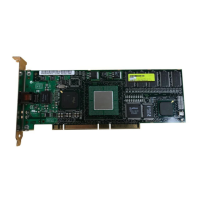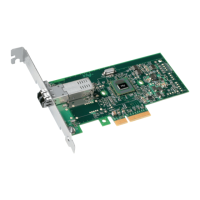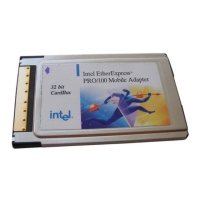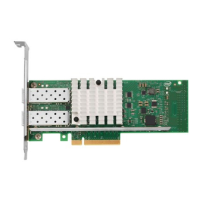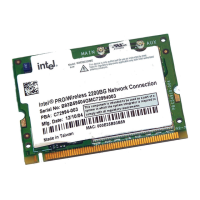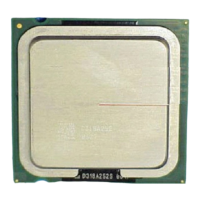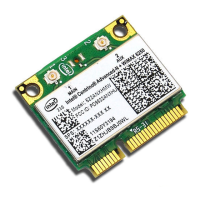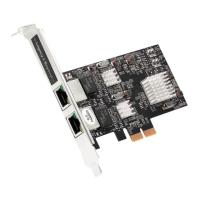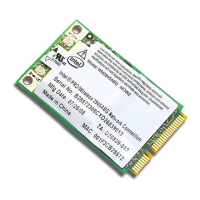1000BASE-T/100BASE-TX/10BASE-T Physical Layer Compliance Tests Manual
Intel Confidential 115
Building and Testing UTP LAN Cables to Insertion Loss Specifications
Appendix E: Building and Testing UTP
LAN Cables to Insertion Loss
Specifications
The ANSI TP-PMD specification requires the use of “standard” test cables to perform common-
mode rejection and standard bit error rate tests. In Annex A.1.1 of the ANSI standard, the TP-PMD
partially defines these cables by their intended insertion loss, rather than their physical length. (For
a list of required cables, see Table E-1. For more detail, read the TP-PMD.)
The insertion loss of the test cables must be characterized by measurement. Do not assume 1.0 dB
of loss per 10 meters of CAT 5 cable. Almost all CAT 5 cable is either much lower in loss, or
significantly higher. Because the cables are not consistent, measure the characteristic insertion loss
of the appropriate type of cable, cut it to length (the length that provides the desired loss), and add
connectors.
E.1 Purpose
This section explains a general method of measuring the insertion loss of twisted pair Ethernet
cable, and how to calculate the desired cable length based on a target insertion loss. This section is
not an exhaustive treatment of this topic, nor is it a replacement for a network analyzer’s instruction
manual.
E.1.1 Network Analyzer Setup and Calibration
Measuring a cable with a network analyzer is relatively straightforward. A vector network analyzer
is more accurate than a scalar network analyzer. Use two 50 ohm unbalanced to 100 ohm balanced
transformers to match the cable impedance with that of the network analyzer. (North Hills Balun
model NH13734 is okay, and so is model 0300BB).
1. Connect the 50Ω side of one balun to port one on the network analyzer via a BNC cable.
2. Connect the 50Ω side of the other balun to port two of the network analyzer through a second
BNC cable. See Figure E-1.
3. In two-port or S21 (insertion loss) mode, set the network analyzer's start frequency to 1 MHz,
and the stop frequency to 101 MHz (If your analyzer or baluns are BW limited, calibrate to a
little over 16 MHz instead of to 101 MHz).
4. Set the analyzer's display format to insertion loss in dB.
5. Perform a two-port calibration (Through connect & Isolation):
Note: Two port calibration methods may vary for different network analyzers. Refer to the equipment’s
users manual for more details.
a. For the through connect, connect the 100Ω side of one balun to the 100Ω side of the other
balun via a very short CAT5 twisted pair cable.
b. For the isolation measurement, terminate each balun’s 100Ω side with a 100Ω resistor.

